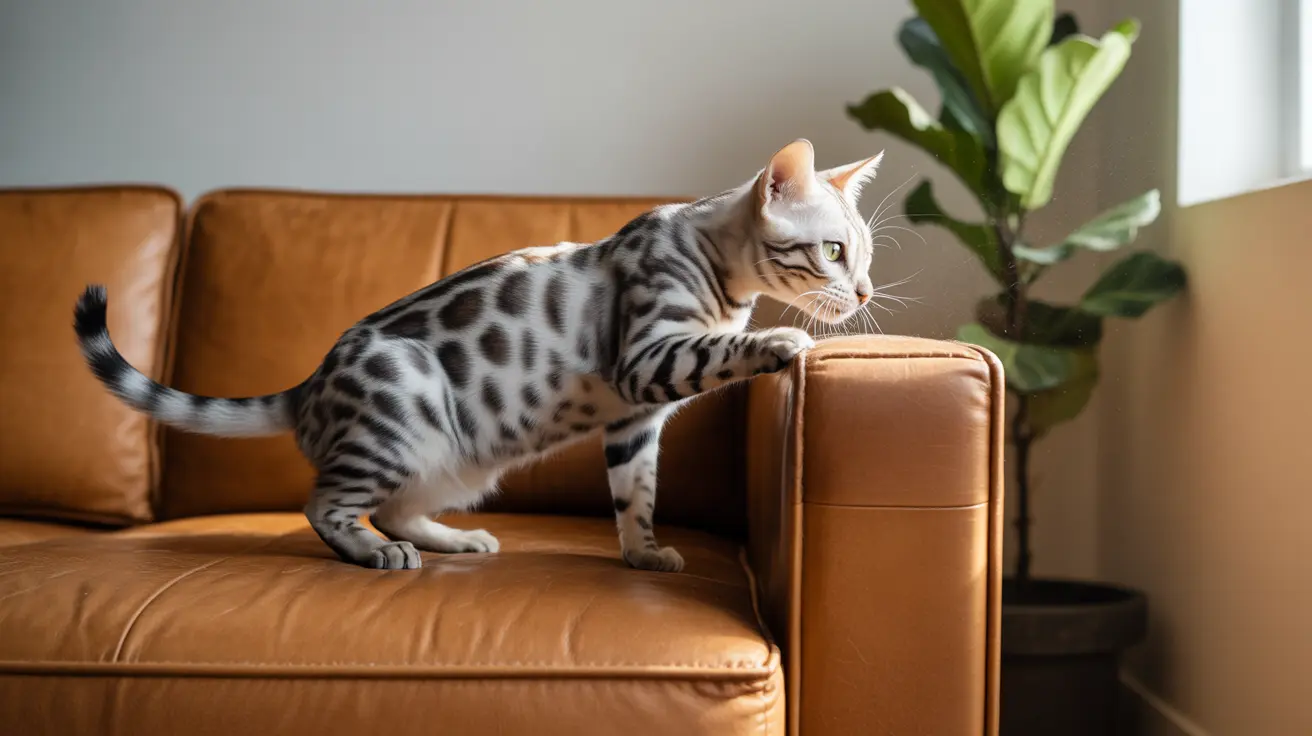Discovering cat urine on your leather furniture can be distressing, but with the right approach, you can effectively eliminate both the odor and stains. This comprehensive guide will walk you through proven methods to remove cat pee smell from leather while preserving its quality and appearance.
Understanding the unique challenges of cat urine on leather is crucial for successful cleaning. Cat urine contains strong-smelling compounds that can penetrate deep into leather's porous surface, making traditional cleaning methods insufficient. Let's explore the most effective solutions for this common pet owner problem.
Act Fast: Initial Response to Cat Urine on Leather
The moment you discover cat urine on leather, quick action is essential to prevent permanent damage:
- Blot the area immediately with paper towels or a clean cloth
- Avoid rubbing, which can push urine deeper into the leather
- Continue blotting until no more moisture transfers to the cloth
- Remove any cushions or removable parts for thorough cleaning
Using Enzymatic Cleaners: The Most Effective Solution
Enzymatic cleaners are specifically designed to break down the proteins in cat urine that cause odors:
- Choose an enzyme cleaner specifically formulated for pet stains
- Test the cleaner on a hidden area first
- Apply generously to saturate the affected area
- Allow the solution to sit for 10-15 minutes
- Blot dry with clean cloths
Why Enzymatic Cleaners Work Best
These specialized cleaners contain beneficial bacteria that produce enzymes to break down urine compounds at a molecular level. Unlike regular cleaners that may just mask odors, enzymatic solutions actually eliminate the source of the smell.
Natural Cleaning Alternatives
While not as effective as enzymatic cleaners, these natural solutions can help with mild cases:
- White vinegar and water solution (1:1 ratio)
- Baking soda for odor absorption
- Hydrogen peroxide (3%) mixed with dish soap
- Essential oils for final freshening (use sparingly)
Leather Conditioning and Aftercare
After cleaning, proper leather care is crucial:
- Allow the leather to dry completely
- Apply a quality leather conditioner
- Test conditioning products in an inconspicuous spot
- Repeat conditioning if leather feels dry
- Consider using leather protector spray to prevent future stains
Prevention and Long-term Solutions
To avoid future incidents:
- Place covers on leather furniture when not in use
- Consider using deterrent sprays
- Maintain multiple clean litter boxes
- Address any underlying behavioral issues with your veterinarian
- Monitor your cat for medical conditions that may cause inappropriate urination
Frequently Asked Questions
How can I safely remove cat urine smell and stains from leather furniture without damaging it?
Use an enzymatic cleaner specifically designed for pet stains, and always test it on a hidden area first. Blot the area gently rather than rubbing, and follow up with a leather conditioner to prevent damage.
What are the best enzymatic cleaners for eliminating cat urine odor on leather?
Top-rated enzymatic cleaners include Nature's Miracle, Rocco & Roxie Professional Strength Stain & Odor Eliminator, and Anti-Icky Poo. Look for products specifically formulated for use on leather.
Can homemade remedies like vinegar or baking soda effectively neutralize cat urine smell on leather?
While these solutions can help with mild cases, they're generally less effective than enzymatic cleaners. Use a 1:1 vinegar-water solution carefully, and never saturate the leather. Baking soda can help absorb odors but should be vacuumed thoroughly.
How should I condition leather after cleaning to prevent drying and cracking caused by cat urine cleanup?
After the leather is completely dry, apply a high-quality leather conditioner in thin layers, allowing each layer to absorb. This helps restore moisture and prevent damage from the cleaning process.
What steps can I take if cat urine has soaked deeply into leather cushions or padding?
For deep saturation, remove and replace the affected padding if possible. Multiple treatments with enzymatic cleaner may be necessary, and professional leather cleaning services might be required for severe cases.
Remember, successful cat urine removal from leather requires patience and possibly multiple treatments. Always prioritize the leather's integrity while addressing the odor and stains, and consider consulting a professional for valuable leather pieces or severe cases.






